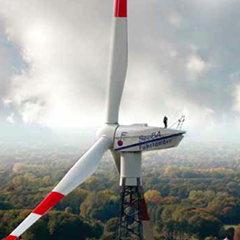seebaWIND’s CEO, Holger Hämel, is an expert commentator on the cost-effective operation of wind power plants in Germany. In this latest dispatch, he offers PES readers an invaluable perspective on the market’s various trends and challenges.
As the REL 2.0 goes into effect, the remuneration rates for wind power plants will be significantly reduced starting in August, the repowering bonus cancelled and the additional installed capacity of new plants strictly regulated.
Since the supply of new plants is stalling, service providers have to increasingly adapt to preserving their “classics”. Due to the insecure remuneration rates, optimising yield for old plants is becoming more and more important. And because many plant owners will only be able to sell their electricity on the stock market, the forecasts have to be correct.
Drastic cut-backs for plant operators
Along with the introduction of the amended Renewable Energy Law REL 2.0, planned for August 2014, the funding for wind power plants on land will be massively
cut. For the federal government wants
to confine the annual additional capacity of on-short wind power plants to 2,500 megawatts and to adjust the funding
rates accordingly.
In addition to introducing the expansion corridor, the government will reduce funding by cancelling the repowering bonus. This bonus, at 0.5 eurocents per kilowatt hour, was paid for electricity generated by wind power plants that replaced one or several old existing plants in their or a neighbouring county.
Furthermore, the federal government wants to cut the existing funding to locations with particularly strong wind conditions. In high-yield locations, the remuneration in 2015 should fall by 10 to 20 percent below the level of 2013.



























